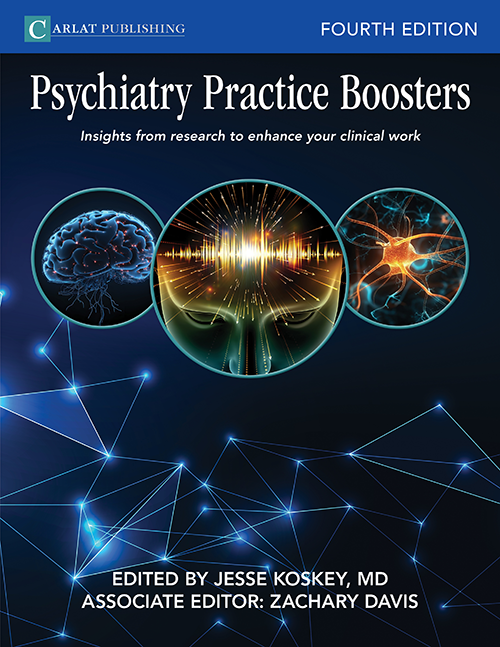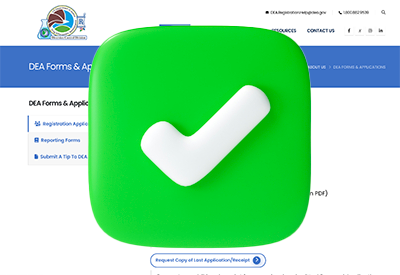Home » School Inclusion: What You Need to Know
CLINICAL UPDATE
School Inclusion: What You Need to Know
January 31, 2022
From The Carlat Child Psychiatry Report
Joshua Feder, MD.
Private practice child and adolescent psychiatrist, San Diego, CA. Editor-in-Chief, The Carlat Child Psychiatry Report.
Dr. Feder has disclosed no relevant financial or other interests in any commercial companies pertaining to this educational activity.
Yamila is a 9-year-old autistic 3rd grader from a Spanish-speaking home with an individualized education plan (IEP) who attends a special education classroom with seven other students. She is a role model for her peers, compliant and never complaining. For two months Yamila has often been absent with stomachaches. After an extensive workup, Yamila’s pediatrician refers her for psychiatric consultation.
When a school placement is a bad fit, medication and therapy are unlikely to make much difference. This article will help you understand and assist your patients to optimize their success in the least restrictive placement.
What is school inclusion?
School inclusion refers to the practice of including students with disabilities in regular classes, rather than in separate special education classes. Inclusion is a legacy of the civil rights era, ending school segregation, consistent with current social emphasis on diversity and acceptance. The Individuals with Disabilities Education Act (IDEA) requires schools to provide a free and appropriate public education in the least restrictive environment—in other words, to mainstream students if possible (https://sites.ed.gov/idea/regs/b/b/300.101). While it is not always possible to fully include all students, the goal of IDEA is to press schools to do their best to include students as much as possible in more typical school experiences.
How does inclusion work?
IDEA requires public schools to assist students with known or suspected learning or social disabilities. This usually begins with response to intervention (RTI) in which the school tries out accommodations in general education settings, such as frequent check-ins between the student and teachers, help with organizing academic tasks, and seating with matched peers to support better social interaction. If the RTI effort is ineffective, the school conducts an assessment, typically psychoeducational testing, speech and language therapy (including pragmatics), occupational therapy (eg, for motor planning, motor tone, and sensory differences), and observations at school. The child may qualify for a 504 plan (ie, more accommodations) or an IEP. IEPs can range from therapy services to modifications of the curriculum in order to support student success. Once parents sign them, IEPs are legally binding for the school. Sometimes an IEP calls for segregated placement. This usually occurs when the staff does not feel qualified to educate and support the student in a mainstream classroom. In such a case, future meetings include discussion of whether or how the student can be placed in the least restrictive environment.
Benefits and challenges
Generally speaking, inclusion is more helpful than segregated instruction for students with disabilities. Outcomes for students in special education classrooms with more intensive services have not been as robust as hoped (Causton-Theoharis J et al, Remedial Spec Educ 2011;32(3):192–205). By contrast, a recent study by Cole at Indiana University tracked students with disabilities through several years and found that students included for most of the day did significantly better on state tests than those not included (Cole SM et al, JSE 2021;54(4):217–227). Similarly, a study by Gee et al in 2020 found that learners with complex support needs did better academically and otherwise (eg, communication skills) in inclusive classrooms (Gee K et al, Res Pract Persons Severe Disabl 2020;45(4):223–240).
What about inclusion’s impact on “typical” students? Gottfried et al reported “spillover” impacts of including students with special needs with mainstream students (Gottfried MA et al, Educ Eval Policy Anal 2014;36(1):20–43). These include more frequent school absences, for example an average of ½ day per semester for each student. Another study found that mainstream students in inclusion classes had lower academic achievement in reading and math. This impact was greatest in reading scores for Black and Hispanic children in low-income districts (Fletcher J, JPAM 2010;29(1):69–83). There are also concerns about increased externalizing behaviors among mainstream students, and how to help them respond adaptively when a student with special needs has behavioral difficulty.
This is a continuing area of study, and Roldán et al recently found that students without disabilities actually benefit from learning with peers with disabilities (Roldán SM et al, Front Psychol 2021;12:661427). A recent literature review concluded that while older mainstream peers have more risk for spillover, inclusion is overall positive for all students and improves understanding and acceptance (Kart A and Kart M, Educ Sci 2021;11(1):16).
Some of the ways kids with special needs can benefit from inclusive classrooms are as follows:
- Acceptance by peers as equal members of the school community
- Greater enculturation and improved ability to function in society over their lifetime
- More opportunities for academic achievement
- Increased opportunities for participation in clubs, sports, and other activities
- Exposure to a more natural range of social behavior for all students
Conversely, some common challenges include:
- Persistent bias, discrimination, and fear on the part of the other students and families (the “not in my backyard” or “NIMBY” objection) despite research supporting the benefits of inclusion for all students
- Managing the sensory environment of a general education classroom
- Creative execution of push-in services, such as occupational therapy or speech and language therapy delivered in the classroom
- Safety or bullying considerations when there is inadequate supervision available in class or on the playground
The bottom line is that general education placement should not be viewed as a “geographic” process but one that is carefully considered and titrated to maximize success for all students.
Talking with patients and families
Families frequently find it challenging to navigate the educational options available to their child. When meeting with patients and parents to talk about building a good plan for school, consider these talking points for productive discussion:
- What have been the best moments in your child’s educational career? What made these moments special? Tell me some of your child’s education inclusion success stories (eg, helpful projects, effective adaptations). Let’s think about how those can be replicated.
- What do you think are the child’s strengths and challenges? Most importantly, what is meaningful to them?
- Help me understand the most important goals you have for your child this year.
- Tell me how you want your child’s education to look this year.
- Tell me what you think your child might need to be successfully included in the classroom, whether in person or virtual. Think about areas of sensory, motor, visual, communication, and executive function. Consider noise-canceling headphones, headsets that amplify the teacher’s voice, specific seating, allowances for pacing during class, yoga ball chairs, fidgets, or extra time on assignments and tests.
- Compared with virtual learning, do you see any ways in which in-person learning is helping or could help your child (eg, fewer transitions in the day, use of certain tech tools to make learning more accessible, better mental health)? Let’s figure out how we can lean into these benefits now and in the future.
- What barriers—cultural, practical, and others—might make inclusion difficult, and how can we work to overcome these barriers in a supportive fashion?
On evaluation, Yamila refers to her special education classmates as “friends” but is frightened by some and avoids all of them. She has no playdates and spends her time repeatedly drawing a specific Disney logo. Yamila’s parents agree to your request to meet with the IEP team to recommend that the team consider placing Yamila in a less restrictive setting where she might feel safer and have more opportunities for social interaction.
Working with schools
Once you have a good idea of what might work for the student, it’s time to look at how those measures can work at school. Given the need to optimize learning for the student while supporting mainstream peers and staff, consider these factors as you work with schools and families:
- Where will the student have a better chance of meeting their academic and social goals?
- Where will the student have more social opportunities?
- Can therapies be delivered in the mainstream classroom?
- For which specific activities can the student join the mainstream class? Sometimes a student requires a different environment for certain activities (eg, test taking) or for some more focused academic instruction.
- How can staff manage the mix of students to maximize success and minimize loss of academic or social learning for other students? Programs such as The Good Behavior Game (https://goodbehaviorgame.air.org) can help teachers to foster cooperative learning.
- What support do the mainstream children and their families require? Sometimes in-class education programs, such as Circle of Friends or Autism Is, help students and families learn acceptance, foster inclusion, and reduce bullying.
- What support will staff require to optimize the experience for all the students in the class? This may include specialized consultation and regular and frequent protected time for reflective problem solving.
In your joint meeting, the team recognizes that they need to transition Yamila out of her special education classroom. They will try her in mainstream classes, one at a time, beginning with art class as Yamila’s interest in drawing can help facilitate social interaction. The team plans to look for mainstream Spanish-speaking peers who might partner with Yamila in push-in speech and language therapy. The class will receive a program to foster inclusion and acceptance, and the staff will have follow-up support every other week from the district special educational specialist.
A good plan generally leads to academic and social progress for the student. But special education, including mainstreaming, is expensive. School districts often provide inadequate resources, resulting in little headway for students. In their effort to show progress, schools may document small gains that mean little in terms of actual function. You have a role in monitoring. Expect to see substantive changes not in a few weeks, but over seasons. That said, meaningful progress should not take years, and a recent Supreme Court case ruled that minimal progress is inadequate progress.
Three months later, Yamila no longer has stomachaches. Her attendance is good, she has regular playdates, and she enjoys her new Girl Scout troop.
CCPR Verdict: Special education accommodations must be made in the least restrictive way possible. The good news is that the bulk of research supports inclusion as beneficial for all students. Help your patients and families to build successful inclusion plans.
KEYWORDS idea inclusion inclusion-strategies independent-educational-plan-iep least-restrictive-environment
Issue Date: January 31, 2022
Table Of Contents
Recommended
Newsletters
Please see our Terms and Conditions, Privacy Policy, Subscription Agreement, Use of Cookies, and Hardware/Software Requirements to view our website.
© 2025 Carlat Publishing, LLC and Affiliates, All Rights Reserved.


_-The-Breakthrough-Antipsychotic-That-Could-Change-Everything.jpg?1729528747)



